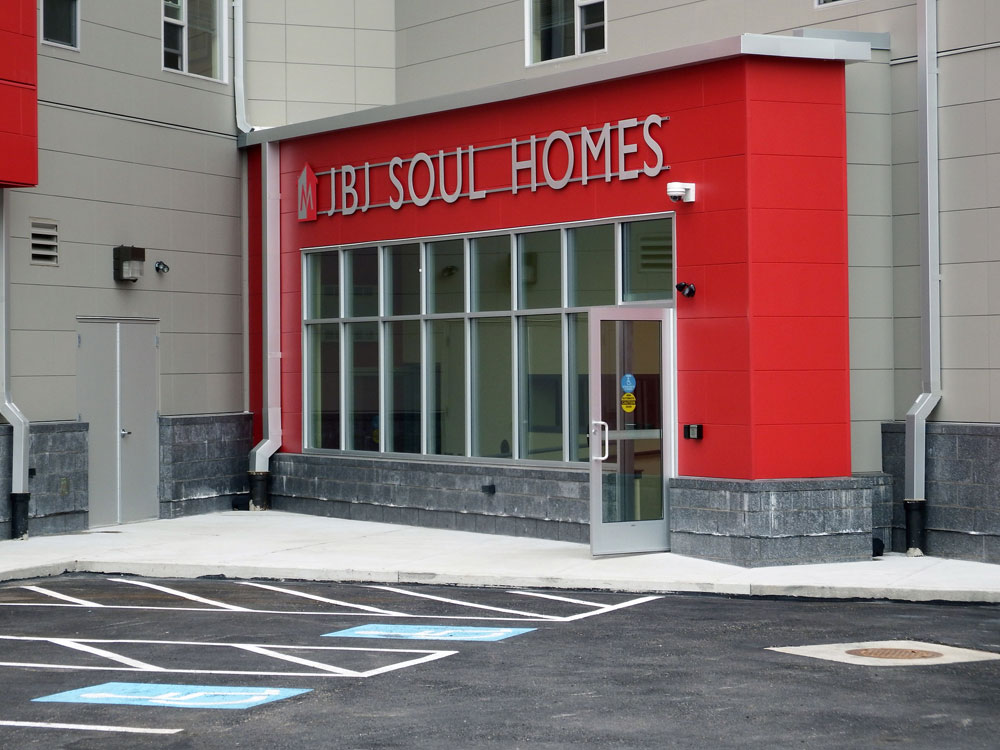
April 27, 2020; Shelterforce
As Miriam Axel-Lute points out in Shelterforce, “Projects covered by federal mortgage guarantees and affordability programs, including Low Income Housing Tax Credits and Section 8, were all covered by a 120-day eviction moratorium under the CARES Act as of March 25.” In the short run, this protects tenants. But for nonprofit housing owners, absorbing lost rent revenue definitely poses a financial challenge.
All told, nonprofit owners provide federally subsidized housing to over a million households nationwide. A number of nonprofits made it clear they would not evict for nonpayment before the passage of federal legislation.
“We adopted, before it was mandated, the idea that we’re not going to ask anyone to move out because of nonpayment,” Bart Mitchell, president and CEO of The Community Builders, which owns 12,000 housing units, tells Axel-Lute.
How are nonprofit housing organizations doing? Axel-Lute surveys a number of nonprofits, and here are some of her findings:
- Mercy Housing experienced a 12-percent reduction in rent revenue for April, concentrated primarily within the unsubsidized 27 percent of its 25,000 units.
- Urban Land Conservancy (ULC), a community land trust in Denver, saw a 14-percent drop in residential rent collected among its 152 units.
- Capitol Hill Housing, located in Seattle, owns 1,560 units across 46 properties and also earns revenue from property management. Rent revenue has fallen nearly 20 percent; the nonprofit is currently projecting a loss of $2 million to $2.5 million on an $18 million budget.
More broadly, Axel-Lute reports that in Minnesota, the Greater Minnesota Housing Fund (GMHF), a community development financial institution (CDFI) that supports affordable housing development, surveyed regional housing nonprofits with a total of 31,500 units in early April. She says, “Declines in rental income were reported in 99 percent of portfolios, ranging from less than 10 percent up to 40 percent, with an average of 16 percent. Rental losses were above zero but below 10 percent for 48 percent of the total units. They were between 31 and 40 percent for 26 percent of the total units.”
Rent revenues, Axel-Lute adds, are also down for “Those organizations with commercial or nonprofit tenants.” For example, ULC reports that non-residential rent collection is down 27 percent. Capitol Hill Housing is giving all its small-business tenants a three-month rent deferral. “From a business perspective, we’re far better off working with our current tenants than to see them go out of business and then we’re sitting on empty commercial space,” says CEO Christopher Persons. “But then we’re also a small not-for-profit, so it’s not like we have unlimited capacity.”
Sign up for our free newsletters
Subscribe to NPQ's newsletters to have our top stories delivered directly to your inbox.
By signing up, you agree to our privacy policy and terms of use, and to receive messages from NPQ and our partners.
Meanwhile, expenses are going up, as maintenance staff increase cleaning protocols and personal protection measures. Some housing groups are seeking mortgage forbearance, but no one to whom Shelterforce had spoken had gotten a change in their debt obligations yet.
Federal help also remains a possibility, but far from certain. Axel-Lute notes that Rep. Ilhan Omar (D-MN) has introduced a bill that would cancel all rent and individual mortgage payments, and allow property owners to apply to a fund to make up their lost rent. Omar’s bill, adds Axel-Lute, would prioritize nonprofit housing owners in the disbursement of relief funds.
In the meantime, nonprofit housing groups are drawing down on reserves, while they figure out possible future options. Linda Mandolini, president of Eden Housing in California, notes that most nonprofit housing groups do have some money in reserve. “But if this goes beyond two or three months, we seriously need the state and the federal government to consider how they will help us get relief.”
Aaron Miripol, president and CEO of ULC, says without federal rental and loan assistance and bank debt forbearance, he expects reserve funds to last only about 90 days. After that, “if we’re still seeing what we’re seeing, then things will get ugly,” Miripol says.
Warren Hanson, CEO of GMHF, “encourages both affordable housing operators and the CDFIs that serve them to talk to their own lenders and investors as soon as possible… Don’t be in alarmist mode. But share facts.”
The point may be obvious, but Hanson reminds nonprofits to plan in advance: Do not wait for reserves to dry up before talking with lenders.
“It’s better to ask for help now,” Hanson tells Axel-Lute, adding that having “no reserves puts you in a very brittle situation.”—Steve Dubb













